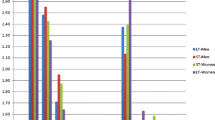Abstract
Sex-role preference is an important neglected variable in statistically controlled studies of homosexual behavior. This variable must accompany controls for degree of psychopathology of respondents and degree of heterosexual and homosexual behavior experienced by respondents. Cross-cultural differences exist. Mexican males have rigidly defined insertor-insertee roles, with earlier life events serving as predictors of these sex-role preferences. Greece is comparable to Mexico. In Turkey, stigmatization accompanies passive homosexuality. Role playing may be age graded, as in the Southwest Pacific. In lower socioeconomic classes of the United States, sex roles for homosexual males are more stereotypically and unequivocably defined. Chicanos generally have strong sex-role preferences when involved in homosexual encounters; their attitude is similar to that found in Mexico. Among middle-class Anglo-American males, few or no sex-role feelings are associated with types of sex acts by most homosexually behaving males. This may be related to a focus on oral-genital rather than anal sex acts. The sharply dichotomized gender roles and the cultural formulation linking effeminacy and homosexuality appear to provide the necessary conditions for the development of sex-role preferences in many societies.
Similar content being viewed by others
References
Bialor, P. (1975). Personal communication.
Bullough, V. (1973). Homosexuality as submissive behavior: Example from mythology.J. Sex Res. 9(4): 283–288.
Carrier, J. (1971). Participants in urban Mexican male homosexual encounters.Arch. Sex. Behav. 1(4): 279–291.
Carrier, J. (1972). Urban Mexican male homosexual encounters: An analysis of participants and coping strategies. Unpublished doctoral dissertation, University of California, Irvine.
Carrier, J. (1976). Cultural factors affecting urban Mexican male homosexual behavior.Arch. Sex. Behav. 5(2): 103–124.
Davenport, W. (1965). Sexual patterns and their regulation in a society of the Southwest Pacific. InSex and Behavior Wiley, New York, pp. 164–207.
Davis, A. (1968). Sexual assault in the Philadelphia prisons and sheriff vans.Transaction 6: 8–16.
Devereux, G. (1937). Institutionalized homosexuality of the Mohave Indians. InThe Problem of Homosexuality in Modern Society Dutton, New York, pp. 183–226 (1963).
Dunbar, J., Brown, M., and Vuorinen, S. (1973). Attitudes toward homosexuality.J. Soc. Psychol., pp. 174–175.
Dundes, A., Leach, J., and Özkok, B. (1972). The strategy of Turkish boys' verbal dueling. InDirections in Sociolinguistics: The Ethnography of Communication Holt, New York.
Farrell, R., and Morrione, T. (1974). Social interaction and stereotypic responses to homosexuals.Arch. Sex. Behav. 3(5): 425–442.
Ford, C., and Beach, F. (1951).Patterns of Sexual Behavior Harper, New York.
Fry, P. (1974). Male homosexuality and Afro-Brazilian possession cults. Unpublished paper presented to Symposium on Homosexuality in Crosscultural Perspective, 73rd Annual Meeting of the American Anthropological Association, Mexico City, November.
Giallombardo, R. (1966).Society of Women: A Study of a Women's Prison Wiley, New York.
Hooker, E. (1965). An empirical study of some relations between sexual patterns and gender identity in male homosexuals. InSex Research: New Developments Holt, New York, pp. 24–25.
Karlen, A. (1971).Sexuality and Homosexuality: A New View Norton, New York.
Layard, J. (1959). Homo-eroticism in primitive society as a function of the self.J. Anal. Psychol. 4: 101–115.
Mead, M. (1961). Cultural determinants of sexual behavior. InSex and Internal Secretions Williams and Wilkins, Baltimore, pp. 1433–1479.
Newton, E. (1972).Mother Camp: Female Impersonators in America Prentice-Hall, New York.
Peñalosa, F. (1968). Mexican family roles.J. Marriage Family 30: 680–689.
Vanggaard, T. (1972).Phallos: A Symbol and Its History in the Male World International Universities Press, New York.
Westwood, G. (1960).A Minority: A Report on the Life of the Male Homosexual in Great Britain Longmans, London.
Young, A. (1973). Gay gringo in Brazil. InThe Gay Liberation Book Ramparts Press, San Francisco, pp. 60–67.
Author information
Authors and Affiliations
Additional information
Presented to Symposium on Ethnosexuality, Annual Meeting of the Southwestern Anthropological Association, San Francisco, April 1976.
Rights and permissions
About this article
Cite this article
Carrier, J.M. “Sex-role preference” as an explanatory variable in homosexual behavior. Arch Sex Behav 6, 53–65 (1977). https://doi.org/10.1007/BF01579248
Issue Date:
DOI: https://doi.org/10.1007/BF01579248




